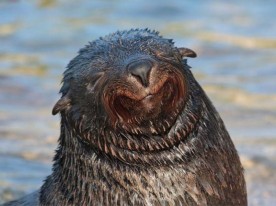 If you’ve been following this blog for a while, you’ll be no stranger to my views on what I believe is one of the most abused, and therefore now meaningless, words in scientific writing: ‘significance’ and her adjective sister, ‘significant’. I hold that it should be stricken entirely from the language of science writing.
If you’ve been following this blog for a while, you’ll be no stranger to my views on what I believe is one of the most abused, and therefore now meaningless, words in scientific writing: ‘significance’ and her adjective sister, ‘significant’. I hold that it should be stricken entirely from the language of science writing.
Most science writing has become burdened with archaic language that perhaps at one time meant something, but now given the ubiquity of certain terms in most walks of life and their subsequent misapplication, many terms no longer have a precise meaning. Given that good scientific writing must ideally strive to employ the language of precision, transparency and simplicity, now-useless terminology should be completely expunged from our vocabulary.
‘Significance’ is just such a term.
Most interviews on radio or television, most lectures by politicians or business leaders, and nearly all presentations by academics at meetings of learned societies invoke ‘significant’ merely to add emphasis to the discourse. Usually it involves some sort of comparison – a ‘significant’ decline, a ‘significant’ change or a ‘significant’ number relative to some other number in the past or in some other place, and so on. Rarely is the word quantified: how much has the trend declined, how much did it change and how many is that ‘number’? What is ‘significant’ to a mouse is rather unimportant to an elephant, so most uses are as entirely subjective qualifiers employed to add some sort of ‘expert’ emphasis to the phenomenon under discussion. To most, ‘significant’ just sounds more authoritative, educated and erudite than ‘a lot’ or ‘big’. This is, of course, complete rubbish because it is the practice of using big words to hide the fact that the speaker isn’t quite as clever as he thinks he is.
While I could occasionally forgive non-scientists for not quantifying their use of ‘significance’ because they haven’t necessarily been trained to do so, I utterly condemn scientists who use the word that way. We are specifically trained to quantify, so throwing ‘significant’ around without a very clear quantification (it changed by x amount, it declined by 50 % in two years, etc.) runs counter to the very essence of our discipline. To make matters worse, you can often hear a vocal emphasis placed on the word when uttered, along with a patronising hand gesture, to make that subjectivity even more obvious.
If you are a scientist reading this, then you are surely waiting for my rationale as to why we should also ignore the word’s statistical meaning. While I’ve explained this before, it bears repeating. Read the rest of this entry »









